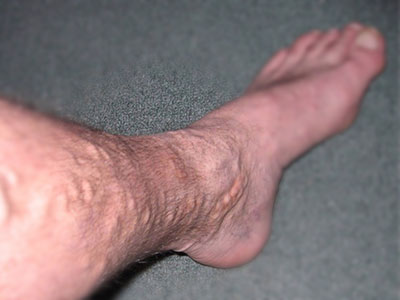 Due to the inability of the blood to flow properly, some people may experience complications of varicose veins. In case one of these occurs to you, it normally takes many years after their first appearance. Read below to know more about them. Weary and heavy legs are among the many complications of protruding veins. Early treatment avoids further complications and issues.
Due to the inability of the blood to flow properly, some people may experience complications of varicose veins. In case one of these occurs to you, it normally takes many years after their first appearance. Read below to know more about them. Weary and heavy legs are among the many complications of protruding veins. Early treatment avoids further complications and issues.
Thrombophlebitis is the swelling of the veins deep within the legs. It may suggest the occurrence of blood clot in the veins. It is painful, feels warm and appears to be red in color. If you experience sudden inflammation, you must visit your doctor immediately. In some cases, thrombophlebitis necessitates the use of compression stockings for treatment. In some instances, nonsteroidal antiinflammatories (NSAIDs) may be prescribed by the physician.
Itchy skin suggests that you should do something about your varicose veins. It becomes drier because it does not receive enough nourishment. On the other hand, if your skin turns out to be red and flaky, you may be experiencing varicose eczema. It is also likely that you develop crusting of the skin with this condition.
Night cramps are often ignored by individuals who have varicose veins but they can be among the many complications of varicose veins. These happen because the muscles, particularly in the feet, are trying to perform doubly hard in the healthy veins to allow better circulation of the blood.
Increased pressure within the afflicted veins may result to accumulation of fluid in the tissues of the skin close to varicose veins. This in turn causes very painful ulcers. But before they actually form into ulcers, you may notice discoloration on that specific area of the skin. Again, consult with a dermatologist if you think that you have an ulcer.
Chronic venous insufficiency is the long-term disruption of exchanges of nutrients, waste products and oxygen between skin and blood. This is due to the abnormal flow of blood in your veins.
Lipodermatosclerosis is when the skin surrounding or above the ankles becomes discolored, as well as hard. It indicates longstanding scar tissue that attacks and substitutes healthy skin in the ankles due to continuous back pressure injury and poor nutrition.
Bleeding of the varicose veins near the skin surface can happen if you bump or cut your legs. You may have a hard time stopping this. As first aid, you may lie down, elevate the affected leg and place direct pressure. Consult with a vein specialist or dermatologist immediately.
Restless legs make some people unable to stop their legs from moving. These are caused by long period of standing or sitting. As these usually happen at the end of the day, people who suffer from this endure difficulty in sleeping. Vein treatment may cure these.
Again, not everyone suffers from complications of varicose veins. But those who have reported that they feel a lot better after vein treatment. This is why it is always suggested that you visit a dermatologist or vein specialist to seek medical advice. He can provide you with information you need to know, such as how to prevent it from worsening, and he can recommend the necessary treatment.
Sources:
